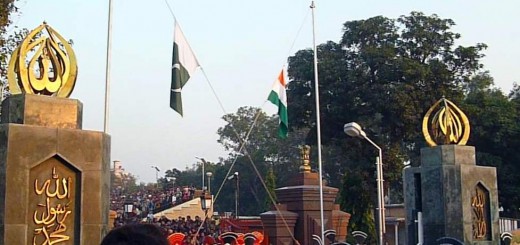Yesterday’s Failures are Today’s Successes
The law of unintended consequences
During most of my working life I have relied on analysing government policies and programs to put daal-roti on the family dining table. One of the lessons learned from these analyses is that the unintended consequences of government programs and policies are sometimes stronger and quite different from their intended effects. Such is the case of the policies and programs followed by the Indian government during the “˜50s, “˜60s and “˜70s. This short article gives three examples of policies whose initial failure has paid off in the long run.
When I think of the failed Indian policies, the first one that comes to mind is her language policy. Many chowkies may not know that Hindi was supposed to be the official language of India. According to the Indian constitution of 1950, Hindi was the official language and English was given the status of an associate official language for a period of transition of 15 years. However, when the 15-year period came to an end, the people of the Southern states, especially the Tamil Nadu, refused to accept the switch to Hindi. They opposed the move with such vehemence ““ violent street demonstrations, self-immolations, even threats of secession ““ that the government of the day had to back down and decided to postpone the switchover scheduled for 1965. Mercifully, it remains “postponed” even until today. That single “failure” of the state policy can be credited for much of the Indian successes today in IT as well as IT-enabled services. But for her advantage in the English language, India would not have the competitive advantage it has over China, Korea and several East European and Latin American countries in the service outsourcing industry. It is perhaps not a coincidence that the states which were the most vehement opponents of keeping English as the official language are also the ones that have shown the slowest growth rates in their socio-economic indicators of development.
More than economic, the “failure” on the language front has proved a boon for the political cohesion of the Indian union. The use of English as the lingua franca has created a pan Indian class, which is not quite the McCauley’s children. It reads and writes in English, speaks to each other in English but is 100 percent Indian in its thinking. These are the people one thinks of when one hears people talk about this almost mythical notion of “˜India’. They have developed common tastes in food and entertainment, a common love of consumerism and seem to revel in their love for their country, sometimes even approaching the level of jingoism. And the South, which was unwilling to learn Hindi under duress, seems to be willing now to accept a hybrid of Hindi and English or Hinglish. Hinglish now seems to be as easily understood in Bangalore as in Mumbai. Some of the recent Bollywood films seem to use more Hinglish than Hindi/Urdu.
The second failure that comes to mind is the failure of the economy to usefully employ the products of the institutes of higher learning. The Indian government decided to highly subsidise its universities and institutes of higher learning, especially the engineering institutions, while somewhat neglecting basic literacy. The graduates of IITs and other engineers and scientists of advanced institutes were supposed to fuel the new engines of growth to be created in the public sector. Unfortunately, these public sector “enterprises” were managed by the all-purpose bureaucrats with a nine-month training in Mussoorie in horse riding, cutlery wielding and other such “managerial” skills. The engineers ended up wasting their time either in what Nehru had called these “new temples of India” or the various ministries in Delhi planning new “temples”. Very soon, the best and the brightest of them started to look for better paying and more satisfying work in the US and other industrialised countries. These elite members of the Diaspora were among the first to avail themselves of the opportunities offered in the newly emerging silicon valley of California. Very soon, the failure of the Indian economy to provide jobs for the best and brightest of India proved a boon for the US multinationals. Poor Nehru would have turned in his Samadhi on knowing that the alumni of his highly subsidised institutes of learning ended up serving the very multinationals from whose clutches he wanted to protect his socialist India. But that failure has now turned into a roaring success as the prodigal sons have returned to start successful businesses, which are prepared to take on the world on its own terms.
The subsidising of higher learning also had a salutary social dimension. It enabled certain upward mobility to the sons and daughters of lower middle classes. This mobility extended even to the most backward sections of the society through a comprehensive and rigid quota system for scheduled castes and tribes, which was later extended to other backward castes. The result is a large and growing middle class, which has a stake in a stable society.
The third great failure was the Industrial Policy of 1956. This wrong-headed protectionist policy, combined with the all-intrusive public sector, ensured that India would produce only shoddy products at high prices, thus effectively shutting them out of the global market place. When India eventually opened up its economy, the global market for manufacturing products made with unskilled cheap labour alone had already been taken by other countries. The still hidebound labour and closure policies ensured that India had very little chance of catching up with early movers in these areas despite an abundance of unskilled labour. India found its niche instead in the sunrise industries with high knowledge content. Here, the earlier lopsided emphasis on higher education came as a boon. Just as India started to open up to the world, the global economy was shifting into knowledge-based goods and services. India at this time found itself sitting over a large pool of unused and underused army of knowledge-based workers, ready and motivated to play their role in the global marketplace. Its first manifestation was, of course, in information technology, which continues to be the main beneficiary of the shift to the knowledge-intensive economy. From there it was only a short hop to IT-enabled services with their call centres, medical records transcription, back-office operations and business process outsourcing going all the way to income tax accounting and investment analysis. The close relationship between information technology and medical research has led to a fledgling biotechnology industry.
The effect of the availability of a large pool of scientific workers has gone beyond IT and related industries. The presence of a large number of professional chemists is attracting many pharmaceutical companies to shift their clinical testing of new drugs to India as well as to collaborate with the existing Indian pharmaceutical companies to undertake joint research and development. And now the effect is being felt in manufacturing as well, as the knowledge content of manufacturing industries increases. The most backward of Indian manufacturing industries, the automobile sector, seems to be leading the way with multinationals choosing India for their outsourcing as well as shifting R&D activities. The Tatas have scored a first by entering into an arrangement with the Land Rover company of the UK to sell its 100% Indian designed and engineered car, Indica, in the European market. The knowledge base, combined with entrepreneurial innovation, is taking India and the world into new areas, such as medical tourism.
Finally, it should be noted that programs and policies frequently also have negative unintended consequences. Indeed, India’s grinding poverty, mass illiteracy and corruption can all be traced to the unintended consequences of the socialist model and government controls imposed on India during the first four decades after her independence. These negative aspects have been amply covered in both the national and international media and academic journals and need not be repeated here. Suffice to say that the road to hell in India was definitely paved with good socialist intentions.













